10 Herbal Teas For Hormonal Imbalance
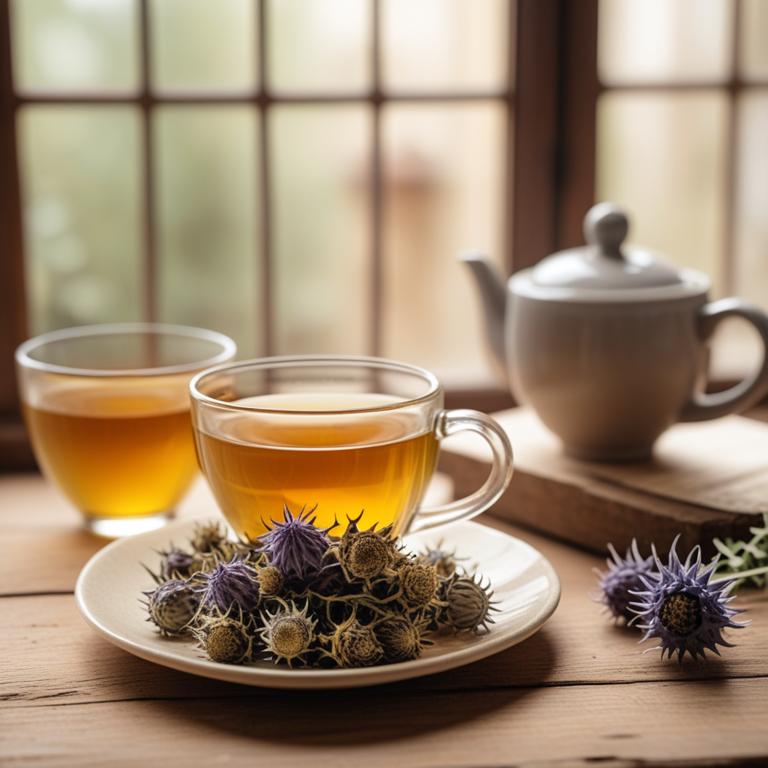
Herbal teas can be a helpful way to manage hormonal imbalances, which can cause symptoms like mood swings, bloating, and irregular periods.
The good news is that certain herbs have been used for centuries to support hormone regulation. For example, Vitex agnus-castus, also known as chasteberry, helps to regulate menstrual cycles and reduce symptoms of PMS. It works by stimulating the pituitary gland to produce more prolactin, which helps to balance estrogen levels. Lavandula angustifolia, or lavender, is another herb that can promote relaxation and reduce stress, which is often linked to hormonal imbalances. When we're stressed, our bodies release more cortisol, a hormone that can disrupt the balance of other hormones. Drinking lavender tea before bed can help to calm the mind and body, making it easier to fall asleep and reducing stress levels.
This, in turn, can help to regulate hormone production and alleviate symptoms of hormonal imbalance. Cimicifuga racemosa, or black cohosh, is a herb that has been used to treat symptoms of menopause, such as hot flashes and night sweats. It works by mimicking the effects of estrogen in the body, which can help to reduce symptoms of hormonal imbalance. Drinking black cohosh tea can provide relief from hot flashes and night sweats, making it easier to manage menopausal symptoms. Drinking herbal teas like these can bring numerous benefits to your life. Not only can they help to regulate hormone production and alleviate symptoms of hormonal imbalance, but they can also promote relaxation, reduce stress levels, and improve sleep quality.
By incorporating herbal teas into your daily routine, you may find that you're able to manage your symptoms more effectively and improve your overall well-being.
- 1. Vitex agnus-castus
- 2. Lavandula angustifolia
- 3. Cimicifuga racemosa
- 4. Angelica sinensis
- 5. Avena sativa
- 6. Ginkgo biloba
- 7. Glycyrrhiza glabra
- 8. Paeonia lactiflora
- 9. Melissa officinalis
- 10. Silybum marianum
1. Vitex agnus-castus
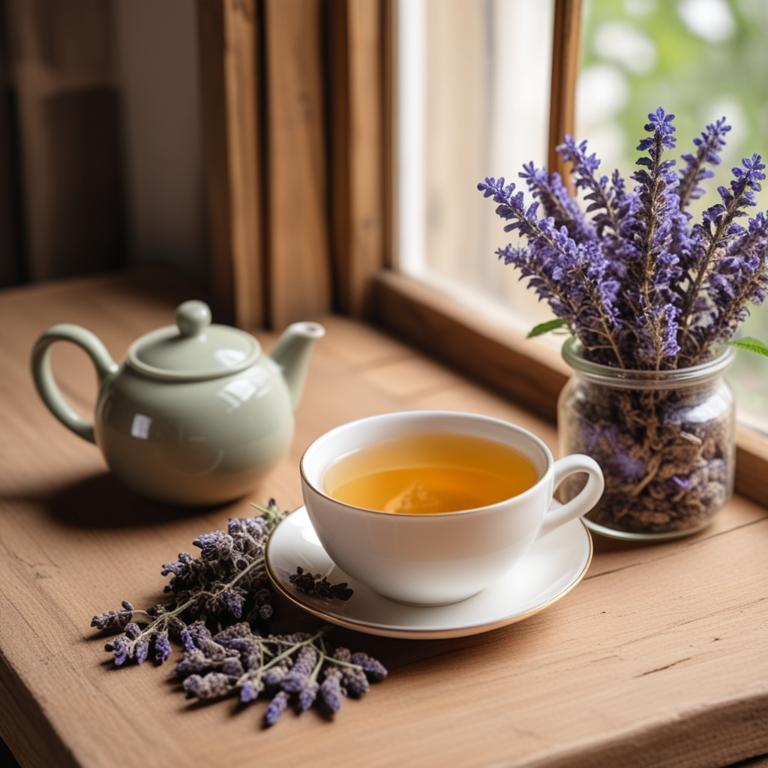
Vitex agnus-castus teas contains the bioactive constituents aucubin, ursolic acid, and agnuside.
These compounds interact with the body's hormonal system by influencing the pituitary gland, which regulates hormone production. The ursolic acid has anti-inflammatory properties, while aucubin helps to regulate cortisol levels, a hormone closely linked to hormonal balance. Agnuside, on the other hand, has been shown to affect the production of estrogen, a hormone that plays a crucial role in menstrual cycles and fertility.
By balancing estrogen levels and reducing cortisol production, Vitex agnus-castus teas can help alleviate symptoms of hormonal imbalance, such as irregular periods and mood swings.
- Gather 1 cup of dried Vitex agnus-castus berries or 2-3 grams of dried root
- Add 1 cup of boiling water over the berries or root in a heat-resistant cup
- Let it steep for 5-10 minutes, then strain the mixture
- Add honey or sugar to taste, if needed. You can also add lemon juice for flavor
- Drink 1/2 to 1 cup of the tea 2-3 times a day, as needed, for optimal results
2. Lavandula angustifolia

Lavandula angustifolia teas contains several bioactive constituents, including linalool, linalyl acetate, and camphor, which contribute to its therapeutic properties.
These compounds have been shown to have a balancing effect on hormonal fluctuations due to their ability to influence the hypothalamic-pituitary-adrenal axis. The linalool in Lavandula angustifolia teas has a sedative effect on the nervous system, which can help to reduce stress-induced hormonal imbalances. Linalyl acetate, on the other hand, has been found to have estrogen-modulating properties, which can help to regulate hormonal cycles.
By consuming Lavandula angustifolia teas, individuals may experience a reduction in symptoms associated with hormonal imbalance, such as mood swings and irregular menstrual cycles.
- Gather 1 cup of fresh Lavandula angustifolia flowers or 1 teaspoon of dried flowers.
- Heat 1 cup of water in a pot until it boils.
- Remove the boiling water from heat and add the Lavandula angustifolia flowers.
- Let the mixture steep for 5-7 minutes, then strain the flowers from the water.
- Drink 1 cup of the Lavandula angustifolia tea 2-3 times a day to help balance hormones.
3. Cimicifuga racemosa
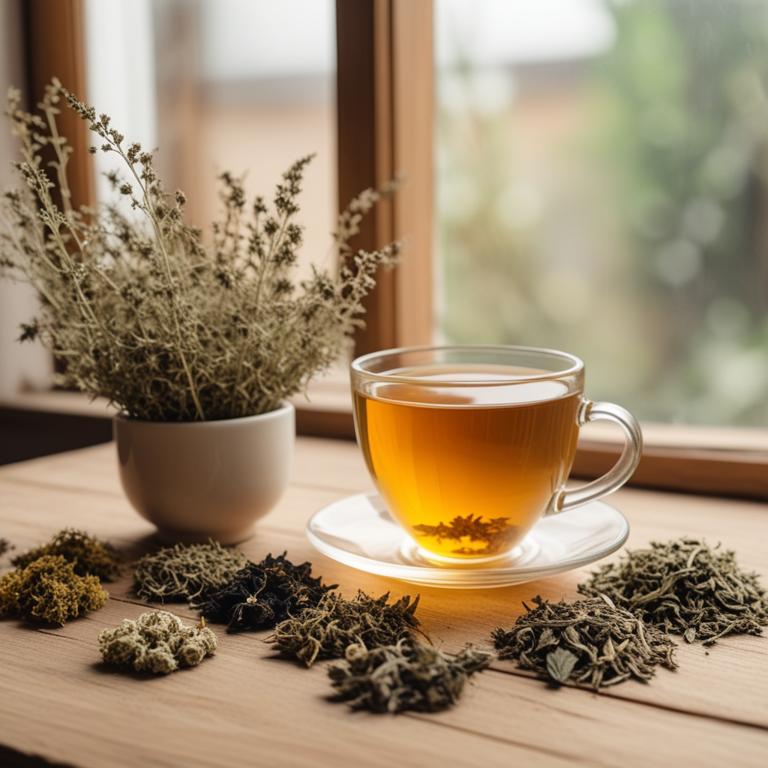
Cimicifuga racemosa teas contains several biologically active constituents, including isoflavones, phenolic acids, and sesquiterpenes.
These compounds have been shown to have a positive effect on hormonal balance, particularly in women experiencing menopausal symptoms. The sesquiterpenes, specifically actinidine and dehydroactinidiene, have been found to bind to estrogen receptors, which can help regulate hormonal activity. Additionally, the isoflavones present in Cimicifuga racemosa teas may help alleviate hot flashes and night sweats, common symptoms of hormonal imbalance.
By interacting with estrogen receptors and other hormonal pathways, Cimicifuga racemosa teas may help restore balance to the body's hormonal system.
- Gather 1 cup of dried Cimicifuga racemosa root and 1 quart of water.
- Combine the dried root in a large pot with 1 quart of water.
- Bring the water to a boil, then reduce heat and let simmer for 10 minutes.
- Strain the liquid into a separate container, discarding the solids.
- Drink 1/2 cup of the tea 2-3 times a day to help manage hormonal imbalance.
4. Angelica sinensis
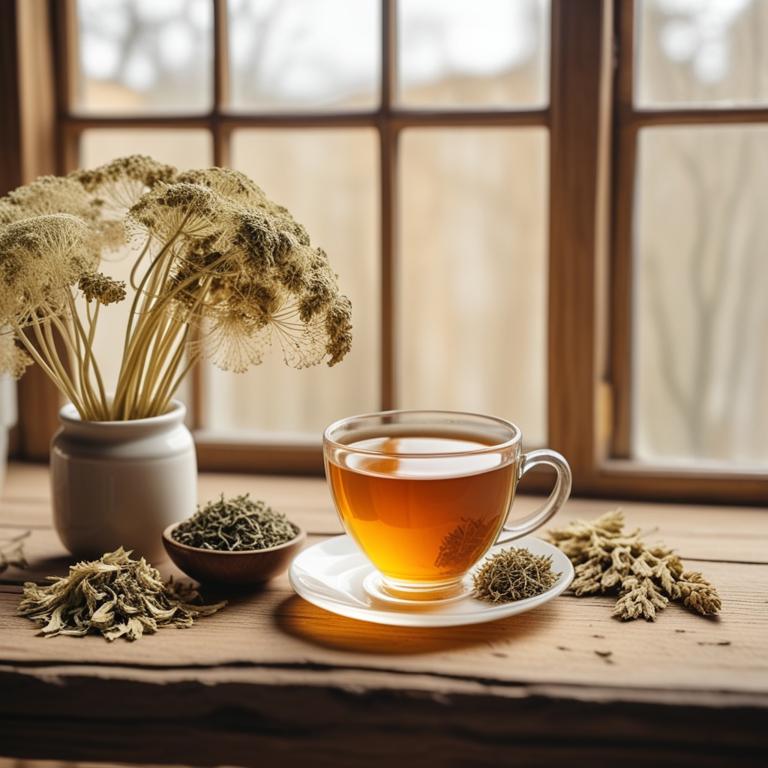
Angelica sinensis teas contains bioactive constituents like ferulic acid, ligustilide, and butylphthalide, which have anti-inflammatory and antioxidant properties.
These compounds help regulate hormonal balance by reducing inflammation and oxidative stress in the body. Ferulic acid, in particular, has been shown to inhibit the production of androgen hormones, which can contribute to hormonal imbalances in women. Ligustilide has been found to have a calming effect on the nervous system, reducing anxiety and stress that can exacerbate hormonal issues.
By regulating hormonal balance and reducing inflammation, Angelica sinensis teas may help alleviate symptoms associated with hormonal imbalances.
- Gather 2 teaspoons of dried Angelica sinensis root and 1 cup of boiling water.
- Steep the Angelica sinensis root in the boiling water for 5-7 minutes.
- Strain the tea into a cup using a tea strainer or a piece of cheesecloth.
- Add 1 tablespoon of honey to the tea, if desired, to sweeten it.
- Drink the tea 1-2 times a day, ideally in the morning and evening, to help balance hormones.
5. Avena sativa
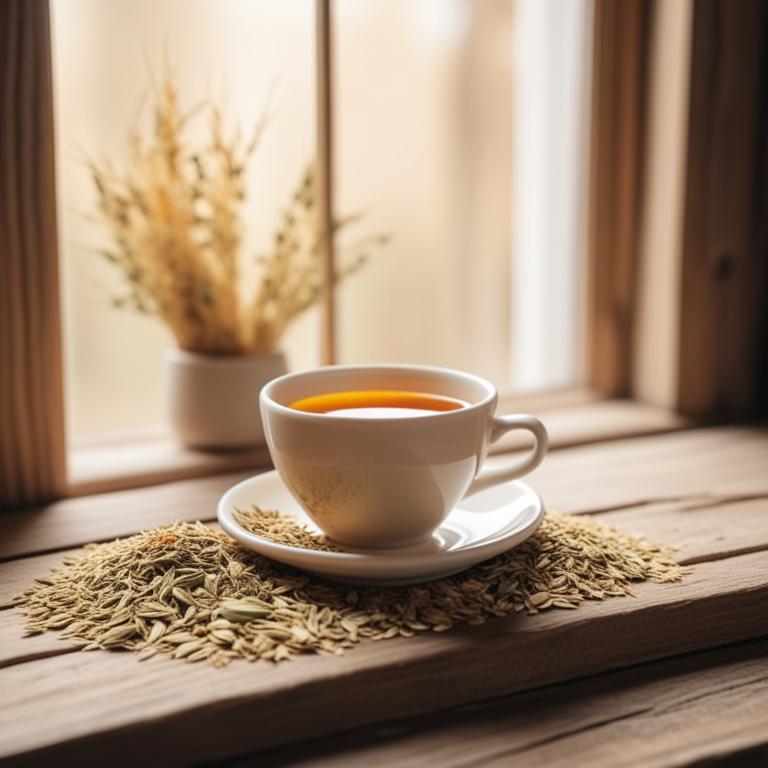
Avena sativa teas contains a rich amount of bioactive constituents, including avenacosides, avenanthramides, and beta-phenylethylamine.
These compounds have been shown to help regulate hormonal balance by influencing the production and activity of hormones such as insulin and thyroid hormones. The avenanthramides in Avena sativa teas have antioxidant and anti-inflammatory properties, which can help reduce stress and promote a healthy balance of hormones. Additionally, the beta-phenylethylamine in Avena sativa teas has been found to stimulate the release of neurotransmitters that help regulate mood and hormone balance.
By consuming Avena sativa teas, individuals may experience a reduction in symptoms associated with hormonal imbalances, such as mood swings and weight changes.
- Gather 1 cup of dried Avena sativa, also known as oat straw or oat herb.
- Combine 1 tablespoon of dried Avena sativa with 1 cup of boiling water in a tea infuser or a heat-resistant cup.
- Steep the mixture for 5-7 minutes, or until the water turns a light brown color.
- Strain the tea into another cup using a tea strainer or a piece of cheesecloth.
- Drink the tea 2-3 times a day, ideally before meals, to help balance hormonal levels.
6. Ginkgo biloba

Ginkgo biloba teas contains flavonoids and terpenoids, which are active constituents that help balance hormones.
The flavonoids, including quercetin and kaempferol, have antioxidant properties that reduce inflammation in the body, which can contribute to hormonal imbalance. Terpenoids, such as bilobalide, have anti-inflammatory and antioxidant properties that help regulate the body's response to hormonal changes. Ginkgo biloba teas also contains ginkgolides, which have been shown to inhibit the production of prostaglandins, hormone-like substances that can cause inflammation and disrupt hormone balance.
By reducing inflammation and regulating hormone-like substances, Ginkgo biloba teas may help alleviate symptoms of hormonal imbalance.
- Gather 1 cup of boiling water, 1 teaspoon of dried Ginkgo biloba leaves or 1 tea bag, and a cup or mug.
- Steep the Ginkgo biloba leaves or tea bag in the boiling water for 5-7 minutes, or as directed.
- Strain the tea into the cup or mug, and discard the Ginkgo biloba leaves or tea bag.
- Add 1 tablespoon of honey or your preferred sweetener, if desired.
- Drink the tea immediately, 2-3 times a day, to help manage hormonal imbalance.
7. Glycyrrhiza glabra

Glycyrrhiza glabra teas contains bioactive constituents like glycyrrhizin, flavonoids, and triterpenoids.
These compounds have anti-inflammatory and antioxidant properties that help reduce stress and promote hormonal balance. Glycyrrhizin, in particular, has been shown to inhibit the activity of an enzyme called 11-beta-hydroxysteroid dehydrogenase, which converts cortisol into its active form. By reducing cortisol levels, Glycyrrhiza glabra teas may help alleviate symptoms of hormonal imbalance such as insomnia, anxiety, and mood swings.
The tea's flavonoids and triterpenoids also have a balancing effect on the body's hormone production, helping to regulate estrogen and progesterone levels.
- Get 1 teaspoon of dried Glycyrrhiza glabra root. You can buy it from a health store or online.
- Add 1 teaspoon of the root to 1 cup of boiling water.
- Reduce heat and let it simmer for 5-7 minutes.
- Strain the tea into a cup and let it cool.
- Drink 1 cup of the tea 2-3 times a day for relief from hormonal imbalance.
8. Paeonia lactiflora
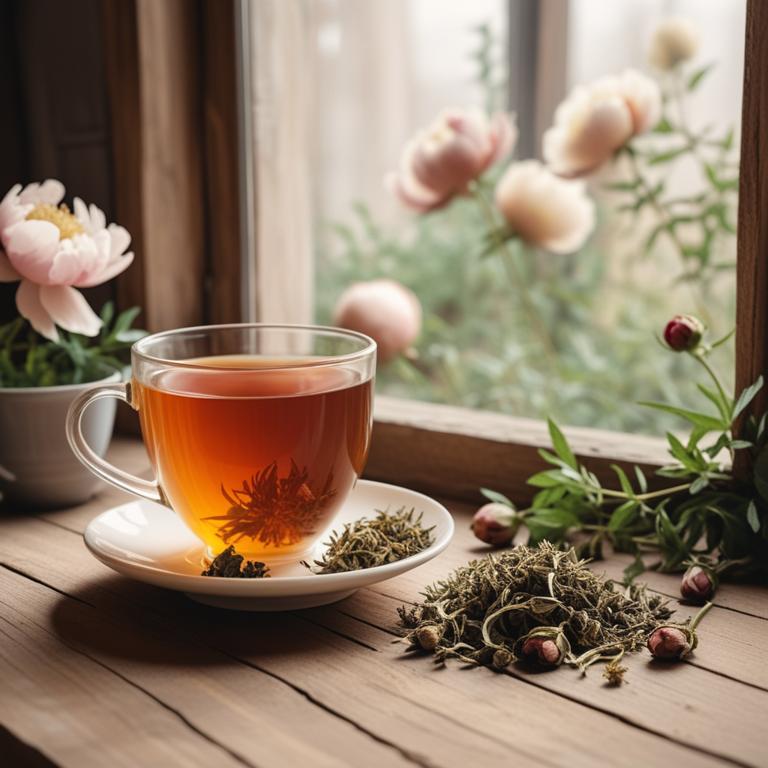
Paeonia lactiflora teas contains paenol, a unique active constituent that helps to regulate hormonal balance.
The root of Paeonia lactiflora is rich in paenol, which has a stabilizing effect on the body's hormonal system. Paenol also has anti-inflammatory properties, which can help to reduce the inflammation associated with hormonal imbalance. Additionally, Paeonia lactiflora teas contain flavonoids, which can help to balance the body's cortisol levels and promote a sense of calm.
By regulating the body's hormonal balance and reducing inflammation, Paeonia lactiflora teas can help to alleviate symptoms of hormonal imbalance, such as mood swings and irregular periods.
- Gather 2 cups of fresh or dried Paeonia lactiflora flowers. Use 1 cup for tea and save the other for future use.
- Use a saucepan to boil 2 cups of water. Then, reduce heat to a simmer.
- Add 1 tablespoon of dried flowers or 2 tablespoons of fresh flowers to the boiling water.
- Steep the flowers for 5-7 minutes, then strain the tea into a cup using a cheesecloth or a tea strainer.
- Drink 1 cup of Paeonia lactiflora tea, 2-3 times a day, to help balance hormonal levels.
9. Melissa officinalis

Melissa officinalis teas contains rosmarinic acid, apigenin, and linalool as its bioactive constituents.
These compounds have anti-inflammatory and antioxidant properties, which help to calm and regulate hormonal imbalances. The rosmarinic acid in Melissa officinalis tea has been shown to inhibit the production of cortisol, a hormone that can contribute to hormonal imbalances. Apigenin, on the other hand, has been found to have a sedative effect on the body, reducing stress and anxiety that can exacerbate hormonal imbalances.
By reducing cortisol production and promoting relaxation, Melissa officinalis tea can help to restore balance to the body's hormonal system.
- Gather 1 cup of fresh Melissa officinalis leaves or 1 teaspoon of dried leaves.
- Bring 1 cup of boiling water to a boil, then let it cool for 5 minutes.
- Add the Melissa officinalis leaves to the cooled water and let it steep for 5-7 minutes.
- Strain the tea into a cup using a cheesecloth or a fine-mesh sieve, discard the leaves.
- Drink 1 cup of the tea 2-3 times a day to help manage hormonal imbalances.
10. Silybum marianum

Silybum marianum teas contains silymarin, a complex mixture of flavonoids, polyphenols, and lignans.
These bioactive constituents have antioxidant and anti-inflammatory properties, which help protect the body from hormonal imbalance. Silymarin also has estrogen-modulating properties, which can help regulate estrogen levels and alleviate symptoms associated with hormonal imbalance. The antioxidant properties of silymarin can help reduce oxidative stress, which is often linked to hormonal imbalance, and promote overall endocrine system health.
By regulating estrogen levels and reducing oxidative stress, silymarin may help alleviate symptoms of hormonal imbalance, such as mood swings, hot flashes, and weight gain.
- Gather 1 cup of dried Silybum marianum flowers and leaves.
- Measure 1 tablespoon of the dried flowers and leaves and put them in a cup.
- Boil 1 cup of water in a kettle or on the stove.
- Pour the boiling water over the Silybum marianum mixture in the cup and let it steep for 5-7 minutes.
- Strain the tea and drink it 1-2 times a day for hormonal balance.